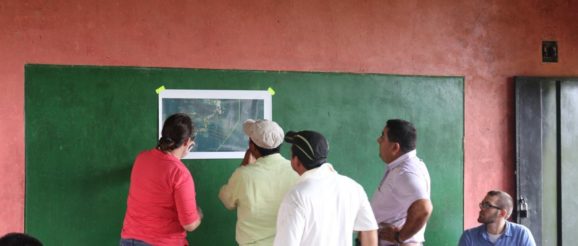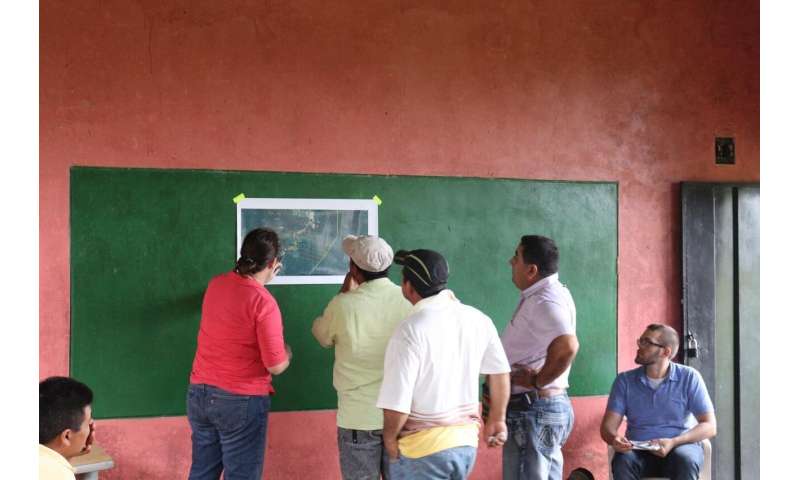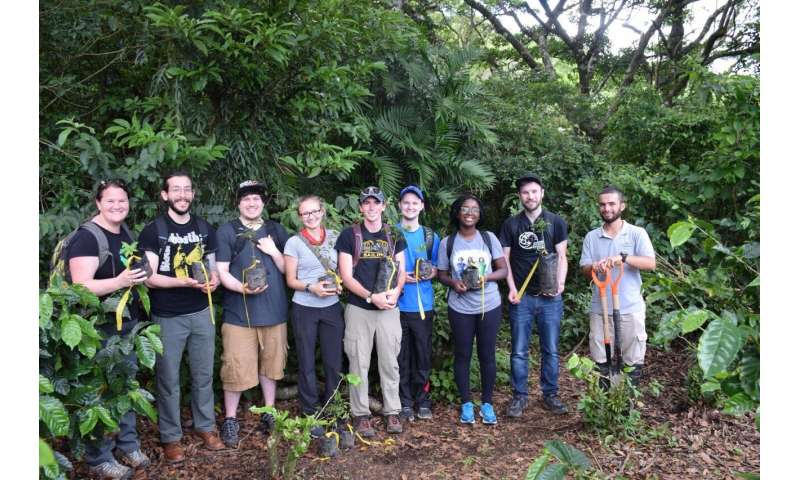Transformational innovation needed to reach global forest restoration goals


The U.N. and other international organizations agree that forest restoration is a critical part of the collective global effort to combat climate change, reduce extinctions, and improve the lives of people in rural communities. Dozens of nations have pledged to restore 230 million hectares of forest so far as part of projects such as the Bonn Challenge and REDD+. The Bonn Challenge goal is to restore 350 million hectares by 2030.
The leaders behind this work agree that ambitious goals are important if humanity is going to avoid the worst effects of climate change. However, a new paper in Conservation Letters has generated the first comprehensive data set that describes how countries are doing so far—and it’s not looking good. The paper looked at 62 countries that have made restoration commitments, and reports that 54 percent of the Bonn Challenge’s goal area for 2020 has not yet been pledged. It then digs into the data to understand why some countries are doing better than others, and what could help those that are struggling.
Aiming high
The authors found that most of the gap between goals and reality exists in the global South, a group of nations generally south of the equator previously referred to as developing countries. These are also the countries that pledged to restore the greatest amounts of land, the paper reports. For example, Rwanda pledged to restore 81 percent of its total land area, and Burundi pledged 79 percent. One-third of the countries pledged greater than 10 percent of their total area, which would require significant shifts in land use and food production.
The authors hypothesize multiple reasons for the large pledges from global South countries. “It could be that global South countries are more aware of the risks they face from climate change, and are therefore more interested in doing something about it,” says Matthew Fagan, assistant professor of geography and environmental systems at UMBC and lead author on the paper. “They also generally have lower labor and land costs, making it easier for them to do restoration.” On the other hand, they could be trying to access more dollars from international donor organizations to reach these aspirational goals, or could have underestimated the challenges of restoration at that scale.
The paper also attempted to predict which countries would have the greatest difficulty meeting their goals based on a dozen factors the team analyzed, such as population growth, government corruption, and previous deforestation rates.
Justin Drew ’20, computer science, and a co-author on the paper, compiled the data for all 12 factors by writing computer code to pull quantitative information from public international databases. He also scoured the internet for information on individual countries’ progress. Drew collected reliable information on the 12 factors for all 62 countries making restoration commitments, and progress information for 12 of them. “When we asked how they did based on these twelve factors, we found they did about as well as we expected,” says Fagan. Countries with the lowest combined score considering all the implementation factors tended to be farther from meeting their goals.
Local engagement
But all is not lost. “We’ve identified countries that need help” to achieve their ambitious environmental goals, says Fagan. “It’s clear that there’s a whole set of countries that are facing headwinds, and if we expect them to be able to accomplish their goals, then the international community needs to support them.”

Increased financial aid is important, but so are other means of support. That might mean providing technical tools and training to help governments and local communities make informed decisions about restoration efforts. Above all, it means listening to local communities’ needs and working in collaboration to create solutions.
“Restoration efforts have a better chance of achieving sustained improvement when local communities have a voice early in the process, feel empowered to participate actively throughout, and can experience direct and long-term benefits from these efforts,” says Maggie Holland. She is an associate professor of geography and environmental systems at UMBC and a co-author on the paper.
In one location, the best solution might be planting trees on agricultural land, such as shade-grown coffee. Other places, it might be tree plantations, reclaiming agricultural land for forest, or thinning existing forests to prevent fires.
“Different efforts will yield different benefits for mitigating climate change, for helping people, for restoring ecosystem health and conserving biodiversity,” Holland says. She suggests that more social science research on the results of different strategies is needed to deploy them most effectively.
There are other, less direct, efforts that can also have a huge effect on forests. “Even if countries haven’t necessarily made big strides in restoration, in some cases they’re making big policy changes that will hopefully result in restoration in the longer term,” Fagan says. For example, bringing electricity to more rural communities reduces the need for fuel wood and charcoal. That reduces forest loss while also improving human health by removing smoke from homes.
Investing in the foundation
Ultimately, the researchers argue that while it may sound good to pledge huge areas of land, that might not be the best strategy to reach the goals of combating climate change, improving people’s lives, and protecting species from extinction. If countries feel pressured to meet their ambitious goals, they might employ the easiest restoration strategies, such as thinning forest. The U.S., for example, has already met its goal of 15 million hectares, and the vast majority of it was through this method. That may have some beneficial effects, like decreasing the chance of forest fires, but it’s not the same as planting trees on agricultural land or shifting land use patterns.
In addition to supporting countries in need, “I think the wealthier countries need to get on this bandwagon and do more themselves as well,” Fagan says. Ambitious, but realistic, and locally appropriate goals are the best way to succeed, Fagan and Holland agree.
Overall, Fagan is “guardedly optimistic.” “There’s a lot of potential and a lot of interesting policy work going on. I believe, though, that there’s a time to build your castles in the air, and now it’s time to put foundations under them. We’re underinvesting in the foundations, and we need to spend more international aid money on helping countries figure out how to meet these commitments,” he says.
“I’d like to hope that this article helps generate more support for that kind of work,” Fagan shares, “because I think it is possible to make this kind of change.”
Matthew E. Fagan et al, How feasible are global forest restoration commitments?, Conservation Letters (2020). DOI: 10.1111/conl.12700
Transformational innovation needed to reach global forest restoration goals (2020, January 17)
retrieved 17 January 2020
from https://phys.org/news/2020-01-global-forest-goals.html
part may be reproduced without the written permission. The content is provided for information purposes only.
